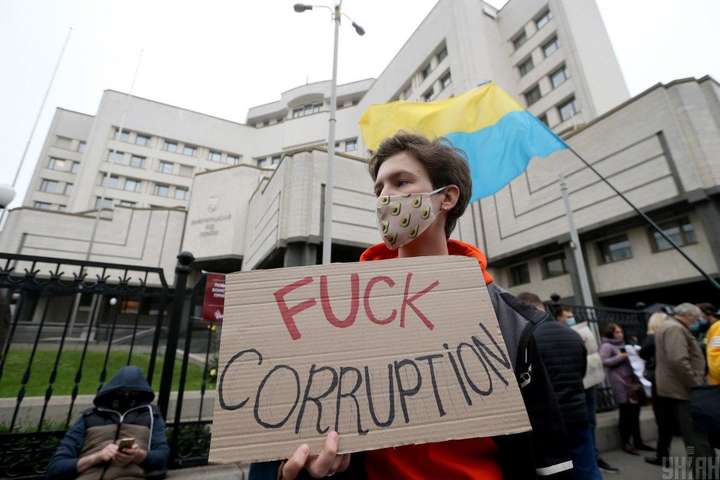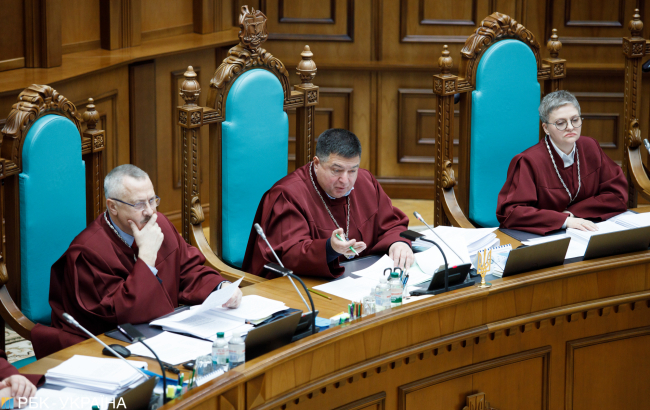Recently, the Constitutional Court ruled the liquidation of the old Supreme Court of Ukraine unconstitutional. Not only did it create a legal conflict, but it again raised the question of whether reforms are moving forwards or backwards.
In 2016, the judicial reform of then-president Petro Poroshenko saw higher courts being liquidated, among them the old Supreme Court of Ukraine. Instead, a new Supreme Court was created as a single cassation court. For its judges, a competitive selection procedure was organized.
The same year, the plenum of the Supreme Court appealed against the judicial reform in the Constitutional Court. Now, after four years of consideration, the Constitutional Court offered its verdict on the case.
It was the judiciary that made it possible for former president Viktor Yanukovych to usurp power. Under his rule, the judiciary enjoyed little trust in society, while during the Euromaidan Revolution Ukrainian courts in many cases worked hand in hand with the government against the protesters. Therefore, after the Revolution, the question of systematically replacing corrupt judges was put on the agenda.
With the new Supreme Court, the task was only partially implemented. Civil society representatives took part in the process of selecting judges. However, they were not given powers to eject all the dishonest candidates, with 44 of them being allowed to the new institution.
Still, the creation of the new Supreme Court has until now been regarded mostly positively.
Constitutional Court decision creates Supreme Court legal conflict
The Constitutional Court ruled that an ordinary law could not alone liquidate the court. Therefore, its provisions were recognized as unconstitutional.
With this step, the Constitutional Court left the old Supreme Court of Ukraine and the new Supreme Court as legal entities, with rulings from both institutions considered legal.
Mykhailo Zhernakov, the Head of the DEJURE Foundation, explains that there are 191 judges in the new Supreme Court and nine in the old one,
“Now only the judges of the new Supreme Court can administer justice. The Parliament has to decide how to transfer the judges of the old Supreme Court of Ukraine to the new one. After amending the law, the judges of the old Supreme Court will be able to administer justice as well. Wherein the total number of the judges of the Supreme Court (new and old) will be equal to the limit of 200 as defined by the law,” he said.
However, Volodymyr Zelenskyy’s new judicial reform envisages reducing the Supreme Court judges to as low as 100 after the commission for the selection of judges is formed.
Lifelong allowances for judges
The same Constitutional Court order also restored lifelong allowances for all the retired judges. It means that the judges who rejected or avoided reform or the ones who work in the occupied territories will receive the same compensation as those judges who went through the reform.
Previously, the law foresaw increasing allowances, but only for those judges who passed the qualification assessment envisaged by the reform, and administered justice during at least three years thereafter.
A significant number of the judges refused to take part in the assessment and resigned. The level of allowances could not have been increased and was defined by the law. Zhernakov explains that the Constitutional Court recognized that all the judges had equal status no matter whether they had resigned or not. Therefore the level of allowances should be equal for all judges, including those who did not pass the assessment, and those who resigned before the constitutional changes which launched the reform in 2016 were passed,
“The decision of the Constitutional Court will significantly influence state expenditure. Thousands of retired judges will have to be compensated with the difference in amounts for four years. The total amount of payment depends on many components. Therefore, some time will be needed for calculating it.”
Roman Kuibida, an expert in the judicial group Reanimation Package of Reforms, expects an increasing burden on the taxpayer because of the provision,
“Additionally, such an approach will induce many judges to resign now. What is the point in working for three years for them? And this will lead to an even more severe labor shortage in the judiciary. And in the near future, this problem is unlikely to be solved.”
Zhernakov adds that such life allowances will be provided even for the judges who worked within Ukraine’s judicial system previously and now work as judges for the so-called “LNR” and “DNR” republics in the occupied Donbas.
The future of judicial reform
His attempt to reform the field started in autumn 2019 after the new parliament was elected.
The reform foresaw cutting the number of the new Supreme Court judges in half, reducing their salaries, and reformatting of the bodies of judicial self-governance, The High Qualification Commission of Judges (HQCJ) and the High Council of Justice (HCJ).
While reducing the number of judges was an ambivalent step criticized by Ukraine’s international partners, reformatting the HQCJ and the HCJ was exactly what Ukrainian NGOs involved in the reform were advocating. Half of each, the HQCJ and the HCJ consisted of judges elected by judges, creating a mi conflict of interest, and obstructing irreversible change in the field.
Partly, the demand for a reboot within the judicial self-governance bodies according to the new principles was envisaged in the new reform, yet it has been blocked at the implementation level.
Zhernakov stresses that during the consideration of the judicial reform by the Constitutional Court it is important that the Ethical Commission at the HCJ and the Competition Commission on the selection of the HQCJ are kept. These, as the expert says, are the main instruments for cleaning up the field.
Meanwhile, the IMF Resident Representative in Ukraine, Goesta Ljungman, described three scenarios of development for Ukraine.
- The most preferable among them foresees full reform and the increase of GDP by 6% annually. It will lead to the population becoming richer by 60% in 20 years and Ukraine reaching today’s level of Poland by approximately 2038.
- The second scenario foresees partial reforms, including maintaining the gap in the judiciary, the GDP increasing by 4%, which will make the population richer by 20%.
- According to the third scenario, there will be a rollback of the reforms and population becoming 20% poorer in 20 years.
It is considered that nowadays Ukraine is developing somewhere between the second and third scenarios.
As stated by Ljungman, compared to the European countries Ukraine’s weakest points are judicial; the system and the rule of law (the level of corruption, protection of property rights), commodity markets, and the financial sector.
Read also:
- Despite second attempt at judicial reform, political decisions rule Ukrainian courts
- Recent outrageous decisions of Ukrainian courts prove Zelenskyy inherits limping judicial system
- Judicial reform 2.0: Zelenskyy comes with initiatives only partly supported by society
- Poroshenko’s judicial reform is over, long live Zelenskyy’s judicial reform
- Ukraine launches large-scale reform for its post-Soviet prosecutor’s offices system
- Ukraine’s judiciary reform: 5 things to know | #UAreforms
- Five years after Euromaidan, 227 judges who persecuted activists keep their seats
- Overloaded Ukrainian courts obstructing justice in top corruption cases








